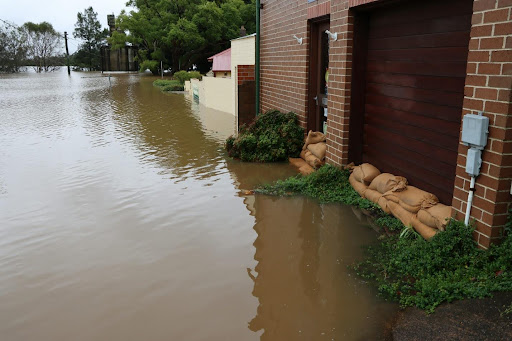Living in St. Petersburg, FL, means enjoying a humid subtropical climate, but it also means being vigilant about potential water damage in your home. Water damage can cause significant problems if not addressed promptly. Detecting water damage early can save you from costly repairs and potential health hazards. Homeowners need to be aware of the early signs to take swift action. This article outlines the key indicators of water damage, helping you protect your home and maintain a healthy living environment. Let’s dive into the early signs every homeowner should be on the lookout for to prevent extensive damage.
Discoloration on Walls and Ceilings
One of the first signs of water damage is discoloration on your walls and ceilings. These spots may appear as yellow, brown, or copper-colored stains and indicate that water has seeped through the surface. This discoloration often means that there is a leak somewhere, either from a roof, a pipe, or an appliance. If you notice these stains, investigate the source immediately to prevent further damage. St. Pete water damage restoration professionals can help identify and fix the underlying issue to protect your home from additional harm.
Peeling or Bubbling Paint and Wallpaper
Another early sign of water damage is the peeling or bubbling of paint and wallpaper. When water infiltrates walls, it can cause the adhesive that holds paint or wallpaper to weaken. As a result, you might see bubbles forming under the surface or areas where the paint is starting to peel away. This is a clear indication that moisture is present behind the walls. Addressing this problem promptly by fixing leaks and repairing affected areas can prevent more extensive damage and maintain the integrity of your home’s interior.
Warped or Buckled Flooring
Water damage can also manifest through changes in your flooring. Warped or buckled floors occur when water seeps into the flooring material, causing it to expand and contract. This issue is commonly seen in wooden floors, but it can affect other types of flooring as well. If you notice your floors are uneven, lifting, or feel soft underfoot, it’s time to check for underlying water damage. Prompt action can prevent the need for complete floor replacement and stop the spread of water to other parts of your home.
Musty Odors
A musty odor in your home is a strong indicator of water damage and potential mold growth. This smell is often caused by water that has been sitting and creating a breeding ground for mold and mildew. Even if you can’t see visible signs of water damage, a persistent musty smell should prompt you to investigate further. Check basements, crawl spaces, and other areas prone to moisture accumulation. Eliminating the source of the water and thoroughly drying the area can help remove the odor and prevent mold from spreading.
Visible Mold Growth
Visible mold growth is a clear and concerning sign of water damage. Mold can appear as black, green, or white patches and often thrives in damp, dark environments. Mold not only damages the surfaces it grows on but also poses serious health risks to you and your family. If you see mold growing in your home, it’s crucial to address the water source immediately and clean the affected area. In severe cases, you may need professional mold remediation services to ensure all mold is effectively removed and to prevent it from returning.
Opt for a Fuel-Efficient Moving Truck
When choosing a moving truck, consider its fuel efficiency. Smaller trucks typically consume less fuel, so accurately estimate the size of the truck you need based on your belongings. Some moving companies offer trucks that run on biodiesel or other eco-friendly fuels. These options can significantly reduce the carbon emissions of your move. Planning your route to avoid heavy traffic and unnecessary detours also helps conserve fuel. By opting for a fuel-efficient truck and planning your trip carefully, you minimize the environmental impact of your long-distance move.
Implement Digital Solutions
Reduce paper waste by using digital solutions during your move. Instead of printing maps, directions, and checklists, keep digital copies on your phone or tablet. Use apps for inventory management and to-do lists to stay organized. Email receipts and important documents to yourself instead of printing them. Digital solutions not only help the environment but also keep your information easily accessible. Embracing technology can streamline your moving process and make it more eco-friendly.
Green Your Cleaning Routine
Before leaving your old home and settling into your new one, you’ll likely need to do some cleaning. Choose eco-friendly cleaning products that are free from harsh chemicals and toxins. Many green cleaning products are biodegradable and come in recyclable packaging. You can also make your own cleaning solutions using natural ingredients like vinegar, baking soda, and lemon juice. Using green cleaning products protects your health and the environment. It’s a simple yet effective way to maintain sustainability during your move.
Consider Alternative Transportation for Smaller Loads
If you have a small load or only a few items to move, consider alternative transportation methods. Shipping items via freight or using a car-sharing service can be more environmentally friendly than renting a large moving truck. Look into services that specialize in small load moves or consolidate shipments to reduce the number of vehicles on the road. These options can be more efficient and cost-effective for smaller moves. By choosing alternative transportation methods, you reduce your carbon footprint and support greener moving practices.
Offset Your Carbon Footprint
Despite your best efforts to make your move eco-friendly, some carbon emissions are inevitable. Consider offsetting your carbon footprint by investing in carbon offset programs. These programs support projects that reduce greenhouse gas emissions, such as reforestation, renewable energy, and energy efficiency initiatives. Many organizations offer easy ways to calculate your move’s carbon footprint and purchase offsets. By offsetting your emissions, you can make your long-distance move more environmentally responsible and contribute to global sustainability efforts.
Conclusion
Making an eco-friendly long-distance move requires thoughtful planning and conscious decisions. By following these ten tips, you can reduce your environmental impact and ensure a greener move. From choosing eco-friendly movers to using sustainable packing materials and offsetting your carbon footprint, every small step counts. Embrace these practices to start your new chapter in an environmentally responsible way. Your efforts not only benefit the planet but also set a positive example for others.



